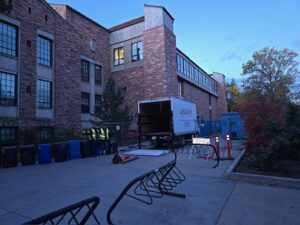January 2025 is upon us…The risks of winter weather on asbestos in buildings or homes primarily relate to the potential for damage and disturbance to asbestos-containing materials or (ACMs). Here are some key points to consider.
1. Freezing and Thawing Cycles, Winter often brings freeze-thaw cycles that can lead to structural damage. If ACMs are in areas that experience moisture, such as roofs or exterior walls, they could deteriorate, releasing asbestos fibers into the air.
2. Snow Accumulation, Heavy snow can put pressure on roofs and other structures. If the roof is made of materials that contain asbestos, the additional weight could cause cracking or breakage, which may expose asbestos fibers.
3. HVAC Systems, During winter months, heating systems are used more frequently. If asbestos is present in ductwork or insulation, and if these materials become damaged or disturbed during maintenance, there’s a risk of asbestos fibers being released into the indoor air.
4. Water Infiltration, Ice dams or melting snow can lead to water leaks within buildings, which may contact asbestos-containing insulation or other materials, causing them to become compromised.
5. Increased Neglect, In cold weather, people may be less inclined to inspect and maintain their homes, potentially allowing existing asbestos issues to worsen without attention.
It’s essential to have any asbestos in your home or buildings assessed or managed by a professional, especially when winter weather may pose risks. If damage is suspected, it’s best to avoid disturbing the area and seek expert guidance for safe removal or encapsulation.
All Star Environmental Services Inc. has you covered, so give us a call
at (720) 996-0570 or message us on our website below
https://lnkd.in/eJ7Fq96

Recent Comments